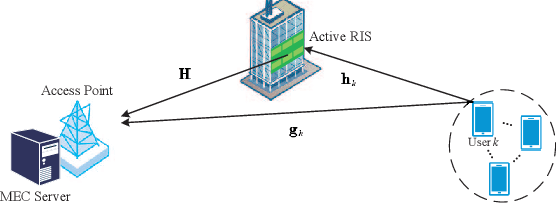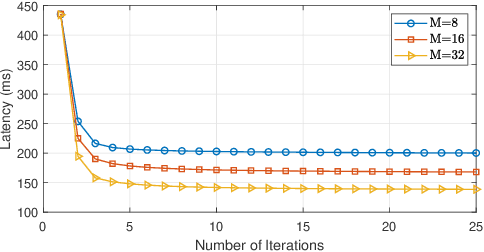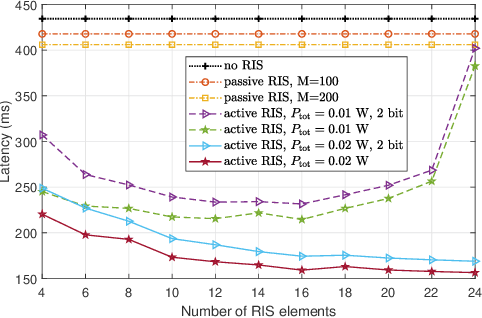Active Reconfigurable Intelligent Surface for Mobile Edge Computing
Paper and Code
Sep 07, 2022



This paper investigates an active reconfigurable intelligent surface (RIS)-aided mobile edge computing (MEC) system. Compared with passive RIS, the active RIS is equipped with active reflective amplifier, which can effectively circumvent the "double path loss" attenuation. We propose a joint computing and communication design to minimize the maximum computational latency (MCL), subject to both the phase shift constraints and the edge computing capability constraints. Specifically, the original problem is decoupled into four subproblems, and then the block coordinate descent (BCD) method and the successive convex approximation (SCA) method are applied to alternately optimize the subproblems. The simulation results show that with the same power budget, the performance gain achieved by the active RIS is much larger than that by the passive RIS.
 Add to Chrome
Add to Chrome Add to Firefox
Add to Firefox Add to Edge
Add to Edge